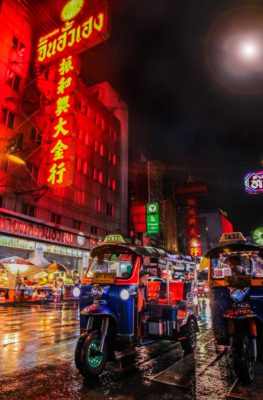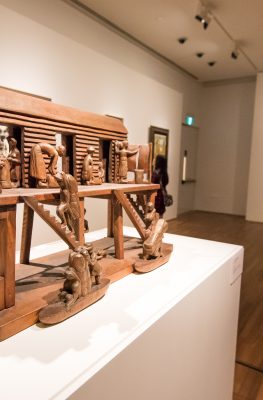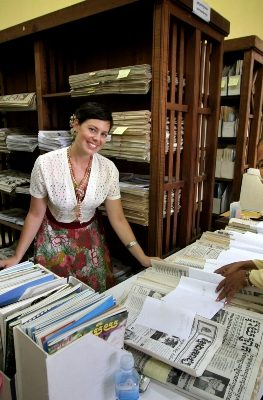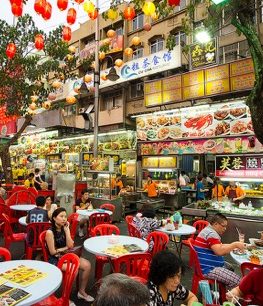Published on November 6, 2015
Streets of Singapore’s Chinatown. Image courtesy of the Singapore Tourism Board.
Southeast Asia’s history with the Chinese is older, and far more congenial, than the region’s comparable experience with Europe.
The Chinese traders who sailed to ports like Singapore and Malacca in Malaysia arrived to do business, not to take over. Welcomed by local leaders, the Chinese traders put down local roots, eventually giving rise to the Chinatowns – or Chinese enclaves – that flourish in many of Southeast Asia’s capitals.
Same Same but Different
A common culture and similar social forces guided the development of Chinatowns throughout the region, explains Ivan Man Dy, the Chinoy (Chinese Filipino) founder of the Philippines’ Old Manila Walks tours.
“[The Chinese] being an old culture, they tended to stick to their own kind,” Ivan tells us. “Secondly, there were certain colonial policies that put the Chinese in their own area, like [the British and] Singapore’s Chinatown and [the Spanish with] Manila’s Parian, and later Binondo.”
With a common Chinese culture tying them together, the region’s Chinese enclaves evolved along similar lines. “Most have certain features [in common], like religious temples, family clan associations, and other things that cater to the community – restaurants, shophouses, so there’s still an ethnic Chinese character which makes it identifiable as a Chinatown.”
Surprisingly, no two Southeast Asia Chinatowns are culturally the same in practice. Successive generations of Chinese assimilated their respective host country’s practices to the point that local Chinese enclaves have become native communities with Chinese characteristics.
“The similarity is that they have distinct Chinese elements,” Ivan tells us. “The difference is how they embedded it within their local context.”
Wat Mangkon Kamalawat, Chinatown in Bangkok. Image © Tourism Authority of Thailand
A Sense of Continuity
The Chinatown in Bangkok, Thailand illustrates Ivan’s cultural observation perfectly. Down the one-and-a-half-kilometre length of Yaowarat Road – from the devotees paying homage at Wat Mangkon Kamalawat (Chinatown’s most prominent Chinese-Buddhist temple) to the decorations on Wat Trai Mit (an ancient Thai temple with a famous gold Buddha) – the beautiful synthesis of Chinese and Thai cultures can be seen in full color.
The district also manages to combine bustling business with a quaint homey personality, one that changes as day turns to night.
Yaowarat in the daylight hours sports shops selling gold, Chinese herbs, and fruits; alongside Chinese restaurants serving authentic cuisine. After sunset, the road turns into a haven for street food, where a number of food trucks prepare Chinese-inspired street food. “Bangkok’s Chinatown still has a very lively neighbourhood feel,” Ivan tells me.
Binondo Church, Manila, Philippines. Image © Mike Aquino.
Manila, Philippines’ Binondo district shares more than superficial similarities with its counterpart in Bangkok. Created to house Chinese Catholic converts by the Spanish colonial authorities, Binondo is now home to a uniquely Filipino synthesis of traditional Chinese and Spanish-Catholic cultures.
Ivan points out the Santo Cristo de Longos shrine along Binondo’s Tomas Pinpin Street – “there are burning joss sticks in front of a Catholic icon, and Chinese fortune telling called ‘pua pue’ where you get answers of yes or no,” recalls Ivan.
In rapidly-changing Manila, Binondo provides a sense of continuity that is absent elsewhere in the city. “You know the restaurants have been serving for 50 years, and a lot of the institutional community has been there for generations,” Ivan says, referring to old Binondo standbys like the 50-year-old Sincerity Café on Yuchengco Street and the 150-year-old Toho Food Center on Tomas Pinpin.
Business is Booming
Because of their historic role as regional traders, the Chinese flocked to coastal cities throughout Southeast Asia, eventually leaving an indelible mark. Case in point: the shophouse.
“As the Chinese were traders, they built shophouses [wherever they settled],” explains Ivan. “The architecture varies from one place to another, but the essence is the same – they had the business at the lower floor, and the residence upstairs.”
Take the old town of Hoi An in Viet Nam, formerly a regional trading stronghold before the Thu Bon River silted up. During its heyday between the 16th and 18th centuries AD, Hoi An attracted a prodigious amount of trade from China and Japan. Many shophouses are still in evidence down the old town’s streets, most notably the Tan Ky Old House that traded in agricultural produce back in the day.
Altar at Yap Kongsi, Penang, Malaysia. Image © Mike Aquino.
Shophouse Evolution
In the former British Straits Settlements of Penang and Melaka in Malaysia and Singapore, enclaves with strong Chinese characteristics sprung up in George Town (Penang), around Jonker Street (Melaka) and Chinatown (Singapore) – the result of robust colonial trading policies. Straits Settlements shophouses underwent a continuous evolution from wooden shanties to elegant Neo-Classical and Straits Eclectic Style structures made of brick and concrete.
You can still find these shophouses in use today, though most have gone through adaptive reuse to serve as businesses or boutique hotels. (Many hostels in Penang – such as the Syok at Chulia Hostel, the Ryokan at Muntri, and the 80s Guesthouse are all converted shophouses.)
Parts of Penang’s George Town strike Ivan as emblematic of Southeast Asia’s Chinatown’s best traits. “You still have the actual elements – old temples, shophouses, and an old-school feel,” explains Ivan. “George Town is one of the most atmospheric Chinatowns in the region.”






